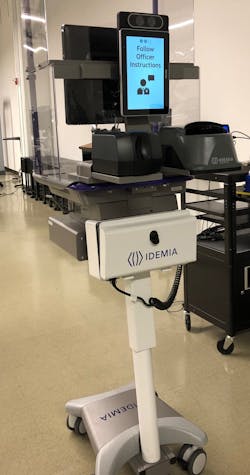This article originally appeared in the October 2020 issue of Security Business magazine. When sharing, don’t forget to mention @SecBusinessMag on Twitter and Security Business magazine on LinkedIn.
Usually, when I start writing about “do-it-yourself,” it means more comments about shrinking profit margins, business prospects and threats to the residential security industry (in fact, there are two articles in this issue that touch on this very timely topic). When it comes to DIY, the enterprise and commercial security providers tend to tune out; however, it looks like COVID-19 is about to add a completely new dimension to DIY in the security industry – one that commercial security providers would be well served to pay attention to.
Forget about self-installation – that is going to be “old-school” DIY. Because of COVID, the new version of DIY will apply the whole “self-checkout lane” at the grocery store to visitor/human authentication and safety. Visitor management and authentication will take on a whole new meaning in the new DIY world, and airports may be the venue that sets the stage for commercial visitor and identity management.
Remember back in the old days, when you had to wait in a 45-minute line at McCarran Airport just to be able to show an exhausted Transportation Security Administration agent your state-issued ID? Thanks to security manufacturer Idemia, those days may be just about over; instead, you can wait in the same line, but at the end will be a machine.
The TSA is piloting this new touchless “self-service” technology that matches a traveler’s live photo with the photo on their ID. The initiative automatically authenticates a traveler’s ID, matches the live photo with the image on their ID, and confirms their flight information in near real time.
“In light of COVID-19, advanced health and safety precautions have become a top priority and part of the new normal for TSA,” TSA Administrator David Pekoske said in a statement. “As a result, we are exploring rapid testing and deployment of this touchless, self-service technology. At the conclusion of the pilot, we expect to be able to determine how positioning the new technology will allow passengers to use it themselves – thereby providing a safer checkpoint experience, while adding significant security benefits.”
TSA PreCheck travelers at Ronald Reagan Washington National Airport (DCA) are now able to voluntarily participate in the pilot. Passengers can approach the device, insert their own ID into the scanner for authentication – rather than physically handing it to a TSA officer to promote social distancing and reduce physical contact. The device will verify the identity of passengers by taking a photo of the traveler and comparing it with the image on the ID, then the results for face matching, ID authentication and flight information are displayed to a TSA officer, who will be behind an acrylic shield to further minimize contact.
The TSA adds that photographs of travelers taken as part of the program are not saved – they are only used for identity verification to confirm that the photo matches the image on the traveler’s ID and ensure the passenger is the true bearer of an authentic ID.
It is not hard to see how this technology and procedure can eventually migrate to corporate campuses, healthcare and hospital facilities, and any other situation where a security officer must manually check ID before granting access.
Notice how few cashiers there are at your local market and how long the self-checkout line is? Hopefully, the TSA will not be flooding the market with soon-to-be-unemployed security professionals, and they find ways to redeploy their forces to become more effective – but smart government decisions are a completely different topic!
In any case, soon DIY security will no longer conjure images of homeowners on ladders. Make sure your business is ready to take advantage and serve your enterprise customers in the new normal.
Paul Rothman is Editor-in-Chief of Security Business magazine (www.securitybusinessmag.com). Email him your comments or topic suggestions at [email protected].




